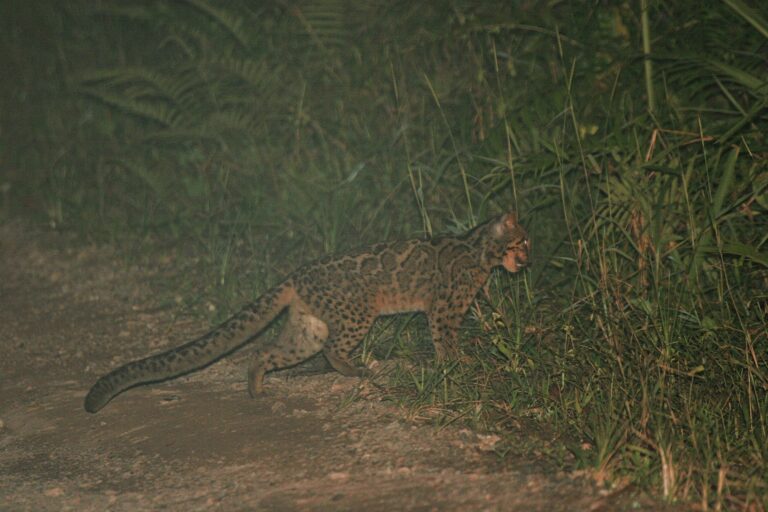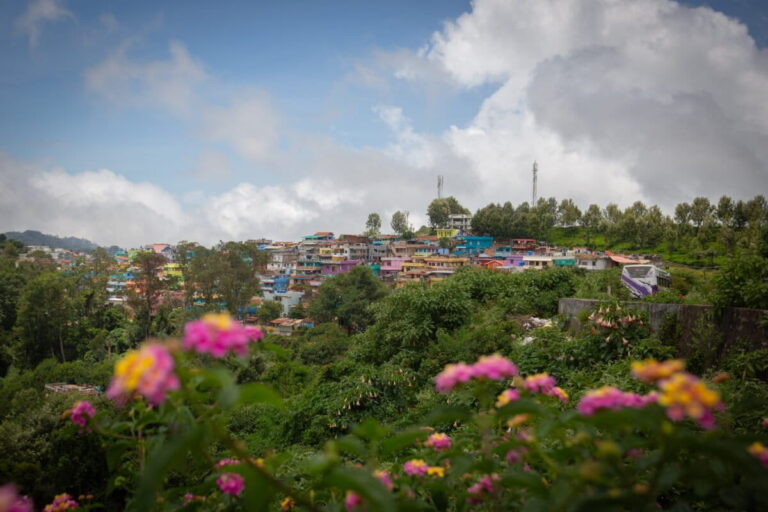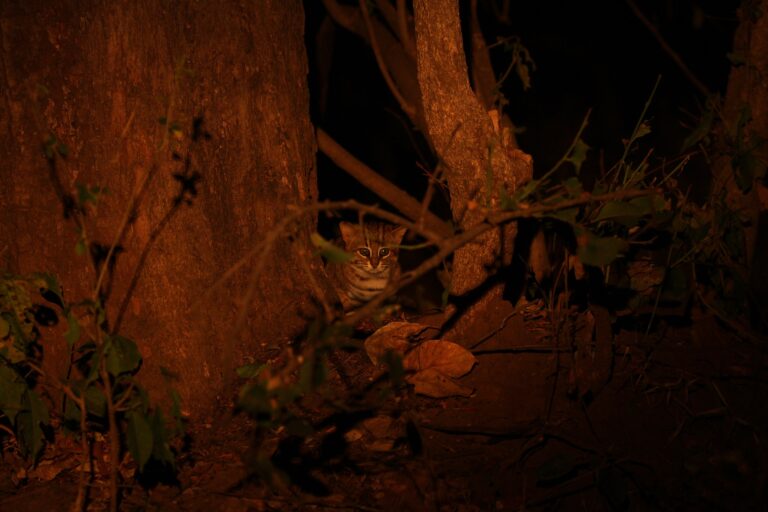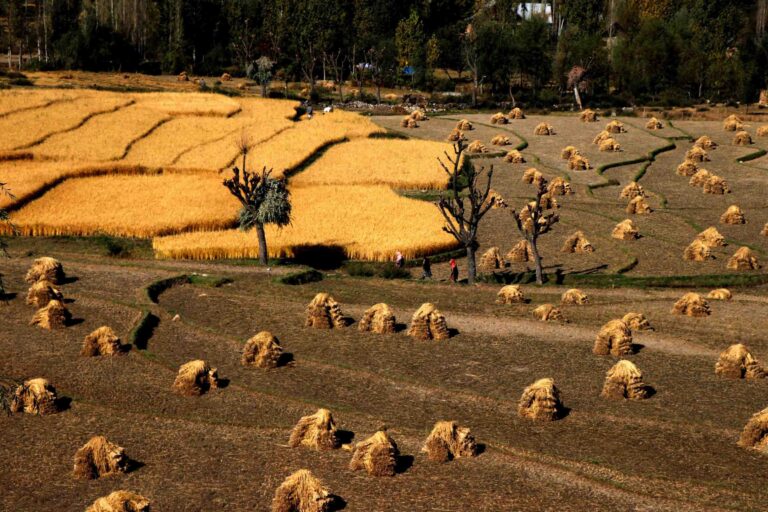- Since the 1980s, the combined populations of river dolphin species have plummeted by 73%.
- With the Global Declaration for River Dolphins, 14 countries (six of them in Latin America) are expected to join forces to protect the six surviving species of this aquatic mammal that inhabit the world’s rivers and are under some category of threat. So far, nine of the governments involved have signed the declaration.
- The declaration comes at a critical moment for these animals. In September 2023, the death of more than 150 river dolphins in one of the most important lakes in Brazil raised international concern.
Last September, in the middle of an intense drought, 154 endangered Amazon river dolphins were found dead in Brazilian Amazon’s Lake Tefé. This was a grim reminder to conservationists about the urgent action needed for the protection of threatened freshwater cetaceans.
“For us, this is a crisis. In one month, more than 10% of the populations of the two dolphin species that inhabit Lake Tefé died,” says Daphne Willems, global leader of river dolphin research at the World Wildlife Fund (WWF). “We’ve never seen this before. It’s climate change. The water was significantly reduced and temperatures rose to 40° Celsius (104° Fahrenheit). Dolphins are not generally sensitive to temperatures; it doesn’t bother them much. But this was like cooking them.”

The mass death occurred just a few weeks before International River Dolphin Day on Oct. 24. To commemorate this day, key actors for the species gathered at a meeting in Bogotá, Colombia. During the meeting, participants discussed the political context surrounding dolphins, success stories and a continental work session.
The main objective of the meeting was to encourage nations to sign the Global Declaration for River Dolphins, promoted by the Colombian government, along with WWF, the Omacha Foundation, the World Bank and specialists from the South American River Dolphin Initiative (SARDI).
The declaration commits 14 of the animals’ range countries (Bangladesh, Bolivia, Brazil, Cambodia, China, Colombia, Ecuador, India, Indonesia, Myanmar, Nepal, Pakistan, Peru and Venezuela) to implement specific actions and strengthen regional and national initiatives. So far, nine of these countries have signed the declaration. China, Indonesia, Myanmar, Peru and Pakistan are pending.
According to WWF, the declaration focuses on halting and reversing the decline of all river dolphin populations, creating a network of protected and well-managed river habitats and promoting research on these marine mammals. It also calls for collaborating with local communities and Indigenous people, as well as eradicating unsustainable fishing practices, among other issues.
“The crisis facing river dolphin populations has not yet reached the international attention it deserves,” reads the declaration. “Saving these species is a mutual responsibility that also benefits rivers and wetlands.”


River dolphins live in several of the largest rivers in Asia and South America: the Amazon, Irrawaddy, Ganga, Indus, Mahakam, Mekong, Orinoco, and Yangtze rivers. Almost 1 billion people converge on their banks.
In a letter of concern regarding the mass death of dolphins in Brazil, WWF explains that the climate changes recorded in the tributaries of the Amazon River not only affect dolphin populations, but also human populations. Many of the communities along these rivers are isolated.
In several areas, the rivers are already impassable due to low levels, making it difficult to transport food and medicine, while also putting water supplies at risk.
“It is estimated that almost half a million people are affected in the region, with a state of emergency declared in 55 of the 62 municipalities in the Brazilian state of Amazonas alone,” reads WWF’s letter.

To experts, the emergency in Brazil shows that nations aren’t prepared for climate change impacts.
“These are impacts that we didn’t see coming,” says Fernando Trujillo, a biologist who specialises in river dolphins and scientific director of the Omacha Foundation, an organisation that has monitored the Amazon and Orinoco rivers and their tributaries and wildlife in Colombia for more than 30 years.
Although studies are still in progress at the Mamirauá Institute in Brazil, according to Trujillo, the main hypothesis about what happened in Lake Tefé is that the hot temperatures caused algae to release a toxin capable of attacking the central nervous system of many species, including dolphins.
“At the moment, in Brazil, physical barriers have been built with logs to prevent dolphins from accessing shallow areas where this alga is releasing the toxin,” says Trujillo. “This happened in Lake Tefé in Brazil, but it can happen at any time and anywhere in the Amazon. We’re not prepared for this. But the global declaration will generate an international cooperation mechanism for us to share lessons learned and to prepare ourselves.”

Read more: Gangetic river dolphins in Assam decline in the wake of anthropogenic pressures
The importance of dolphins
Considered top predators in some of the world’s largest river systems, river dolphins are key to maintaining ecological balance. They are ecological canaries: If dolphins are thriving, the chances are that the river and its fish populations are also doing well overall — as well as countless other river-dependent wildlife species, communities and businesses.
“Dolphins play a fundamental role in the ecosystems they inhabit: They are indicators of the ecosystem’s health. Other species and people can therefore live and depend upon them in healthy rivers,” explains Tarsicio Granizo, director of WWF Ecuador.

The six species of river dolphins are the Amazon river dolphin (Inia geoffrensis), the Ganges river dolphin (Platanista gangetica), the Indus river dolphin (Platanista minor), the Irrawaddy dolphin (Orcaella brevirostris), the tucuxi (Sotalia fluviatilis),and the Indo-Pacific finless porpoise (Neophocaena phocaenoides), which is the only freshwater porpoise in the world. The Yangtze finless porpoise (N. asiaeorientalis) is sometimes considered a member of the Indo-Pacific finless porpoise and sometimes its own species. According to WWF, all these species are threatened.
A seventh river dolphin, the baiji (Lipotes vexillifer), was declared as likely extinct in 2007. Endemic to the Yangtze River in China, the species was the first dolphin driven to extinction by humans in modern times.
The surviving species face unsustainable fishing and trawling, climate change, pollution, illegal mining, direct hunting and infrastructure construction.
The consequences have been devastating. Since the 1980s, the number of all river dolphin populations has plummeted by nearly three-fourths (73%).
“In Asia, we have two endangered species and two that are critically endangered. In Colombia and the rest of the Amazon, the situation is the same: We don’t know how many individuals there are, but we know that the trend is negative,” explains Willems. “We have fewer dolphins now than we did a decade ago. … This is why it’s so important for countries to work together, because the threats and conditions are often very similar.”


According to Elizabeth Campbell, a biologist who specialises in river dolphins at the Scientific University of the South in Peru, the dolphins face numerous threats in Peru’s Amazon ecosystems.
“We know from different projections that in the rainforest, some areas will have more rain, and others less. This is a threat because we don’t know exactly what could happen. But in Brazil, we’re seeing how the government has had to quickly respond to massive strandings, something that has not happened before,” says Campbell. “Peru can learn from the situation in Brazil to consider how the government could respond to such an event. How would they be prepared if something like that were to occur?”
For Campbell, the recently signed declaration “is an excellent initiative.”
“What has happened is that each country has different objectives, policies and conservation areas, but dolphins aren’t assigned to a certain country or area — they move,” she adds. “That’s why it’s better that countries are aligned and all have the same protection.”

Read more: Mahananda river survey records 190 dolphins, warns of fishing threats to Red List species
Efforts to save dolphins
Efforts around the world have sparked hope that the decline of some river dolphin species can be halted.
In China, for example, after decades of decline that seemed irreversible, the results of the latest census of the Yangtze finless porpoise, a critically endangered species, “showed a 23 percent increase in the population in the past five years,” notes WWF. “The first increase since records began. This is the result of strict protection measures and conservation efforts. Despite this, only 1,249 Indo-Pacific finless porpoises remain.”
This is the same river system where the baiji went extinct.
In Indonesia, signaling devices have successfully prevented dolphins from drowning in fishing nets, while increasing fish catches for local communities.
Meanwhile, in Pakistan and India, the Indus river dolphin population has almost doubled in the past 20 years. However, there are only around 2,000 individuals.

“Governments can’t do much by themselves. In the global declaration, there are several institutions that help and organisations that are working on monitoring and raising awareness. There are also private sector actors that support projects, as well as international conventions and many foundations that help,” says Willems. “At the end of the day, this is key.”
Local communities are an extremely important actor “because they have the information and the connections,” continues Willems. According to her, people must work together to remedy the situation. “Communities are the eyes and ears of the rivers — they live with the species,” says Willems.
According to Trujillo, the global declaration is the materialisation of the work of civil society groups, which, with few resources, built a background of information and solutions that will hopefully rise to public policy.
“Dolphins are now being seen as a magnifying glass that we can apply in certain geological areas — in South American and Asian rivers — to try and do positive things for these ecosystems. Ten years ago, no one knew about river dolphins. Now, people are understanding that through their conservation we can open a window of opportunity for these great rivers in the world, to be able to conserve them and improve the quality of life of the people who live around them,” says Trujillo.

Tarsicio Granizo says a solid network of well-managed protected areas can be key to changing the situation for river dolphins, pointing to the Cuyabeno Wildlife Reserve and Yasuní National Park, both in Ecuador, as examples.
“These areas should have updated management plans and a team of park rangers that help with the conservation and protection of these species and educate people about them. Work should also be carried out in close coordination with the communities that live [around the parks],” says Granizo. “Most are Indigenous communities that understand that the conservation of these resources — which is what they’ve been doing for hundreds or thousands of years. … We need to learn from these people how to manage resources so that they’re used sustainably in the future.”


As its overall goal, the global declaration seeks to double river dolphin populations in Asia and stop the decline of populations in South America.
“I’m very positive,” says Willems. “I believe that we can really change the situation of river dolphins because we’ve seen it. By 2030, we’ll see a change, with the situation better for river dolphins and also entire rivers. I’m passionate about achieving this.”
According to the expert, it is for this reason there is a need to understand that river dolphins are part of us and that “we’re directly connected, although we may not feel it.”
“We often think that nature is there in the Amazon, and that we’re here, but the reality is that we’re interconnected,” she says. “That’s why I think everyone should be interested in dolphins as a symbol.”

This story was first published in Spanish by Mongabay Latam and the translation was published by Mongabay.com.
Banner image: Amazon river dolphins (Inia geoffrensis). Image courtesy of WWF Sweden.













